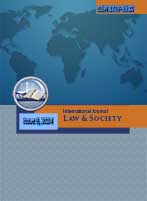Legal regulation of military actions - international and national legislation
Keywords:
war, armed conflict, military conflict, international humanitarian law, state of war, customs of war, Geneva ConventionsAbstract
As of today, numerous violations of human rights and international humanitarian law have been recorded: Russian forces have bombed medical facilities, schools, and civilian quarters; unarmed civilians have been mass executed, women and children raped, and these indicators continue to rapidly escalate. The aggressor state inflicts enormous damage to cities, villages, agricultural lands, forests, and water sources, which will be felt in Ukraine long after the end of the war. These actions have shaken the entire global community, which in turn requires a corresponding response from authorized state institutions. The relevance of international human rights protection issues during armed conflict is unquestionable. The main direction of intergovernmental cooperation is the protection of human rights in international and regional military conflicts. Unfortunately, it is necessary to emphasize that international and non-international armed conflicts worldwide are an objective reality in the current stage of development of our society. The article analyzes international mechanisms for protection during armed conflicts, which provides grounds to assert the existence of a significant number of international legal acts aimed at protecting civilian populations during war, including the four Geneva Conventions of 1949. The author notes that Ukraine has ratified these international treaties, which in turn makes their provisions binding on our state. The Geneva Conventions of 1949 and Additional Protocols to them of 1977 clearly establish the duty of conflict parties to protect civilian populations and civilian objects from attacks. Combatants are obligated to take this into account during combat operations. The main domestic legal acts addressing issues related to armed conflicts are identified. It is noted that such norms mostly have an organizational character not directly related to the regulation of rules of warfare.


